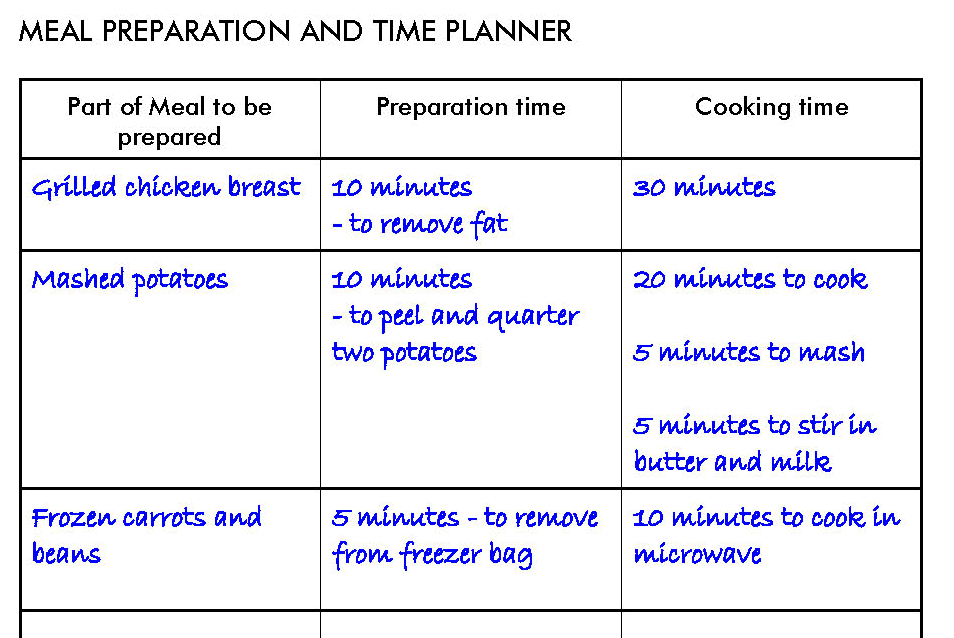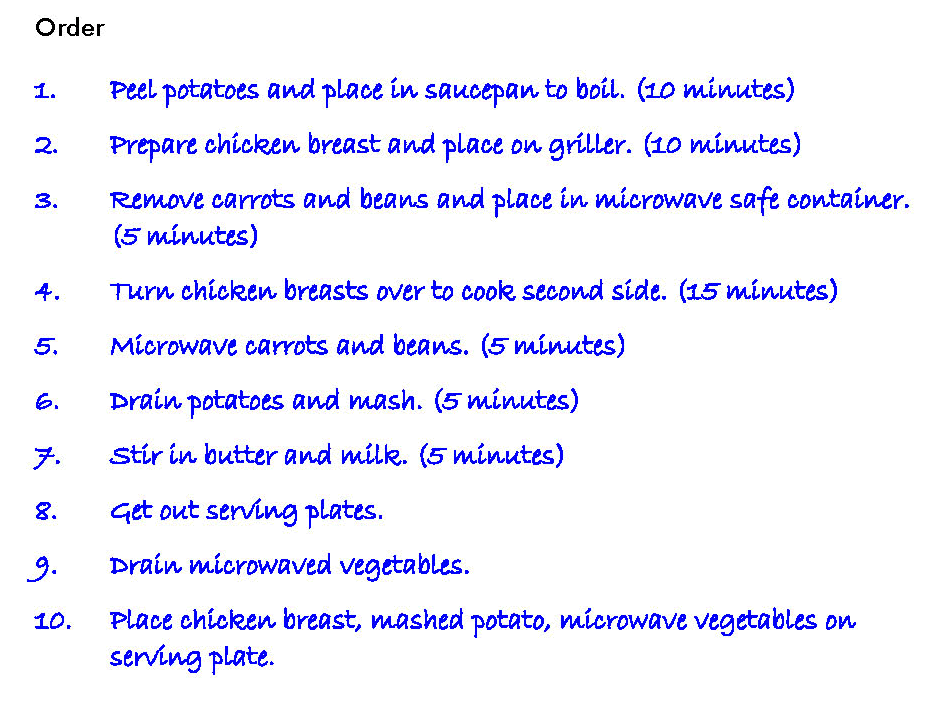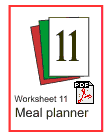- TOOL KITS
- A. The NEXT Step
- B. Promoting Independence
- C. Phone Apps
- D. Return to Work
- E. Motivational Interviewing
- F. Paediatric Brain Injury Rehabilitation Resources
- a) Introduction
- 0. Introduction
- 1. Working together promoting independence
- 2 . Using this kit
- b) Issues, goals, action
- 3. Identifying issues W
- 4. Setting goals W
- 5. Making goals happen W
- 6. Monitoring progress W
- c) Strategies Myself and my relationships
- 7. My behaviour's changed W
- 8. Thinking
- 9. Relationships W
- 10.Conversations
- Managing memory, money and time
- 11. Remembering information and messages
- 12. Finances and handling money W
- 13. Managing time W
- Household tasks
- 14. Food and shopping W
- 15. Food and meals W
- 16. House keeping
- 17. Laundry
- Getting around
- 18. Public transport W
- 19. Accessing the community
- Life tasks
- 20. Self care
- 21. Fitness
- 22. Leisure
- 23. Employment
- 24. Continue learning
- 25. Health and well-being
- Emergencies
- 26. Emergencies
15. Food and meal preparation
- 15.1
Food and shopping - 15.2
Meal identification - 15.3
Kitchen setup - 15.4 W
Timing of the meal - 15.5
Specialist equipment
How can I be more organised in preparing my meals?
The secret to being a good cook is practice! The more familiar and systematic you are with what you are cooking and the place where you do your cooking, the easier meal preparation becomes.
The following strategies will enable you to be organised when cooking.
Some of the meals I like are too complex. What can I do?
1. Use a recipe.
Recipes provide you with instructions to prepare your meal. Recipes identify what ingredients you will need, steps on what method to follow and times for how long each step of preparation or the cooking process should take.
There are however, good and bad recipes. Most recipes provide you with this information, but, the recipe may not be easy to follow. You have two options.
Option 1: Purchase recipe books which are simple to follow.
A good recipe has:
- An ingredient list, where ingredients and the amount required is listed
- Pictures to show the different steps of the cooking process
- Step by step written instructions. Each step has only one instruction. Each step is separated from the others, so it is easy to know where you are up to.
- The recipe states how long it will take to prepare and cook the meal.
- One recipe (or maybe two) to a page.
- The writing used is large in size.
Better recipes also have an equipment list. This list identifies the different pieces of equipment you will need to prepare your meal. This enables you to get out all the equipment and ingredients you will need, before you start. This stops you from having to go back and forth to the cupboard. Best recipes may also have the ingredients and equipment needed in pictures also.
Examples of "better" recipe books are:
- Easy to Cook- Cook and Look Books.
- Women's Weekly Cook Books
Option 2: Simplify a more difficult recipe.
This needs to be done before you start to cook. It means you re-write the recipe more simply. You identify from the recipe what needs to go under the following headings:
- ingredients and quantities you will need
- equipment
- the method you will need to follow. This may be difficult. You need to write down what the recipe says as simpler steps. Each step needs to start on a new line. Leave a line between steps.
2. Prepare familiar meals.
You may have some favourite meals. These may be meals you feel familiar with preparing. You may not think you need to use a recipe and can prepare them from memory. If you can prepare them using your memory then great! If you become a little confused about ingredients, quantities, and what steps to take to prepare it, you may need to write down your recipe in detail, so you know what to do. You can follow the same headings as if you were re-writing a difficult recipe.
These include:
- ingredients and quantities you will need
- equipment
- the method or different steps you need to follow.
Helpful hints
One strategy to help you remember the different steps for preparing your familiar meal is to imagine yourself preparing the meal. Imagine yourself getting out the ingredients and the equipment you will need. Then imagine yourself going through the different steps. You may find you remember another ingredient halfway through meal preparation. You can then write this down for next time.
This written recipe provides you with a checklist you can follow. Also, you can make changes to your recipe as you go, so the next time you prepare this familiar meal you will know exactly what to do. Doing this will also save you time in the future.
By writing down your familiar recipes, you can develop a recipe library with all your familiar meals. You can always return to old favourites and know you will be able to prepare them just as before. Set up an index system to keep them in order. You will then be able to find them easily.
Charlie's experience
Charlie wanted to prepare his favourite meal of beef and black bean. He told staff he knew how to prepare it. Charlie started to prepare the meal and he couldn't remember what was needed or the quantities. Charlie decided to call his mother for more information. Over the telephone he received minimal information. Charlie did not write down the information and instead relied upon his memory. When he went back to cook, he couldn't recall what his mum had said. Charlie called his mum again and this time took lots of detailed notes. He then wrote the information out into a recipe format. He listed the ingredients and their quantities, what equipment he would need, and the individual steps leaving a line between. When it was clearly written, Charlie was able to prepare the meal independently: He placed the recipe in a plastic sleeve and used a non-permanent overhead pen to tick off each step as he completed it. When he had successfully finished making the beef in black bean he wiped the overhead pen off the plastic sleeve and stored the recipe in a recipe folder, ready for next time.
It takes me ages to find things in the kitchen. How can it be set-up so it is more organised?
Chefs prepare their best meals when familiar with the area they are working in. This makes sense!
Helpful tips
Here are a few tips when setting up your kitchen:
- Put everything back in the same spot. If you forget where equipment goes or is found, put labels on your cupboards informing you of what is in each.
- Put the equipment you use most frequently in the easiest places to get at. This includes food in the pantry and the fridge.
- Make sure you have a large workspace area. This could be a kitchen bench or a kitchen tabletop.
- If you get tired after standing while preparing your meal, have a stool to sit on so you can continue working at the kitchen bench or begin your meal preparation seated at the kitchen table.
- You will save time and energy if you get all the ingredients and equipment you need out at one time. A traymobile is handy to enable you to get everything out of the pantry in one go and then wheel it to your workspace. A traymobile also helps when putting ingredients and equipment away or transporting it to the sink after meal preparation has finished.
Sam's experience
One of Sam's goals when he left hospital was to prepare his breakfast and lunch each day. Prior to Sam's injury he and his family had only just moved into a new home. Sam was not able to remember where different things were kept in the kitchen to begin with. Sam and his family put some post-it notes on the cupboards stating what was in each. Sam and his family rearranged some cupboards so Sam could get everything he needed for breakfast and lunch himself. Sam's family quizzed him each day where different things were in the kitchen. Sam is now so familiar with the kitchen he does not need the post-it notes to say what is in each cupboard and he can prepare his own breakfast and lunch without help.
How do I cook so that everything is ready at the same time?
Cooking a meal is difficult when there is more than one part to it. For example, grilled chicken breast, mashed potatoes, carrots and frozen beans.
Often if a recipe is for the main meal it will give a serving suggestion to accompany it. It may not tell you how to make it or how long it will take to prepare. For example, beef stir-fry is the main and it is to be served with boiled rice. However, it doesn't state how long it will take boiled rice to cook and when it should be put on to be ready at the same time as the beef stir-fry.
Helpful hints
One strategy is to use the meal preparation time planner. It allows you to identify:
- what meals you are cooking
- how long each meal takes to cook
- how long each meal takes to prepare
- how to coordinate the cooking so all meals are ready at the same time.
Example
The following example shows how Gemma planned a three-part meal.

From this Gemma worked out what order to prepare the meal. The order was:

Worksheet 11: Meal Preparation and Time Planner
What equipment can I use? I can only use one hand.
It is common for people who have sustained a traumatic brain injury to have a weak arm or an arm that doesn't work as it should. This can make it difficult to prepare meals. Equipment is available to make one-handed cooking easier.
Helpful hints
Here are some examples of equipment that may make meal preparation easier:
- A chopping board with suction cups on the bottom of the board. This prevents it from moving when cutting. A damp dishcloth under a plastic chopping board will also work almost as effectively.
- A chopping board with a raised lip on two sides. This enables you to butter or spread bread without it moving off the chopping board.
- A chopping board with spikes. The spikes hold fruit or vegetables firmly so you can use your good stronger hand to cut or peel the fruit or vegetable.
- A saucepan brace. This suctions to the bench by the hotplate and holds saucepan handles. This holds the saucepan steady while you stir or fry food.
- A non-slip plastic mat. This can be used under bowls when stirring, or under plates when eating, to prevent slipping.
- A traymobile can be used to gather items and transport them between benches or cupboards.
- Tap turners or modified taps which enable you to easily turn on water.
Who can work with me to prepare my meals?
The occupational therapist at the Brain Injury Rehabilitation Unit can work with you to prepare your meals.
Family or support workers will work with you also.
An occupational therapist or the Independent Living Centre can provide you with information about the use, hire and purchase of one-handed cooking equipment.

